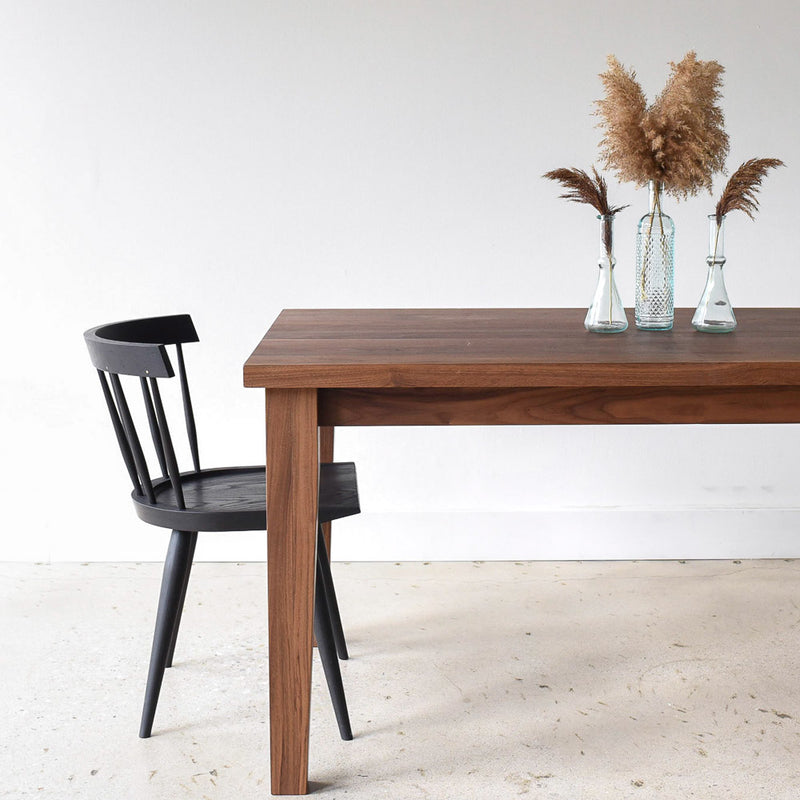Locate Timeless Charm in Handcrafted Dining Table Legs Wood Selections
Discovering the Various Kinds Of Table Legs Timber for Your Dining Space
The choice of eating table legs timber can profoundly affect both the practical and aesthetic qualities of your eating room. Solid wood options, such as oak and walnut, provide a traditional look with unequaled durability, while engineered timber options supply innovative layouts that imitate the richness of natural grains.
Solid Wood Options

Unlike engineered materials, solid timber is less susceptible to warping and damage over time when correctly preserved. Each piece of solid timber is distinct, showcasing individual features that include to the appeal and character of the eating table.
Additionally, solid timber can be finished in various methods, varying from all-natural oils to tarnished finishes, enabling homeowners to personalize their furnishings to match their design. In summary, selecting solid wood for eating table legs not only makes certain structural honesty however also enhances the aesthetic allure of the eating area, making it a worthwhile investment for any kind of home.
Engineered Timber Alternatives

Plywood, created from numerous layers of timber veneer, is steady and particularly solid, making it an outstanding choice for eating table legs. Its layered make-up enables it to endure changes in humidity and temperature level far better than conventional strong wood. MDF, on the various other hand, supplies a smooth surface for painting or veneering, allowing developers to accomplish a polished appearance while maintaining structural integrity.
When picking crafted timber alternatives, it is necessary to think about the desired usage and desired visual. These materials not only enhance the capability of eating rooms however also permit for higher style adaptability, ensuring that conventional and contemporary styles can exist together harmoniously.
Reclaimed Wood Features
Reclaimed wood offers an one-of-a-kind blend of sustainability and character, making it a significantly prominent option for eating table legs. Sourced from old barns, factories, and other structures, reclaimed wood symbolizes a history that new products simply can not replicate. Each piece brings its own story, noted by distinct imperfections, knots, and varying grain patterns, which add to a table's one-of-a-kind visual charm.
Along with its visual beauty, redeemed wood is an eco-friendly option. By repurposing formerly made use of materials, it decreases the need for brand-new lumber, hence aiding to save woodlands and decrease waste. This straightens with an expanding consumer choice for sustainable practices in furniture.
Additionally, reclaimed timber is usually a lot more sturdy than freshly harvested timber as a result of its age. The all-natural drying procedure that reclaimed timber undergoes lead to a denser and stronger product, making it less at risk to warping and splitting. This enhances the long life of dining tables, enabling them to hold up against the roughness of day-to-day usage.
Softwood vs. Hardwood
When selecting table legs, understanding the distinctions between softwood and wood is essential for achieving both visual and functional goals. Softwoods, originated from coniferous trees, such as yearn and cedar, are identified by their lighter weight and simplicity of manipulation. They typically exhibit an even more rustic appearance, making them appropriate for country-style or laid-back eating spaces. Nevertheless, softwoods are normally less resilient than woods, which can be a consideration for family members or those seeking durability in their furniture.
On the other hand, woods, sourced from deciduous trees like maple, cherry, and oak, are renowned for their density, stamina, and durability. The intricate grain patterns and rich hues of hardwoods supply a timeless and sophisticated charm, making them optimal for formal eating setups. While woods have a tendency to be a lot more costly and larger, their strength versus deterioration typically justifies the investment.
Eventually, the selection in between softwood and hardwood for eating table legs need to align with your style vision, usage requirements, and spending plan, guaranteeing that your eating area mirrors your individual design while continuing to be useful over time.

Finishes and Treatments
The visual charm and long life of eating table legs can be substantially enhanced through different coatings and therapies. These procedures not only shield the timber from damages however also raise its appearance, permitting it to complement varied interior designs.
One common treatment is discoloring, which permeates the wood and boosts its all-natural grain while adding color. Stains supply an abundant, elegant appearance, allowing property owners to match their furniture with existing decor. Alternatively, clear coatings such as polyurethane or varnish produce a protective layer without changing the wood's original tone, making certain toughness against damage.
Additionally, natural oils, like tung or linseed oil, nourish the wood and offer a refined sheen, all while being green. These oils enable the Learn More Here surface area to take a look at this now breath, protecting against dampness accumulation and prospective warping.
For those looking for a rustic appeal, weather-beaten or troubled surfaces can be put on produce an aged appearance, adding personality to the piece. Ultimately, the selection of therapies and coatings depends upon personal choice, preferred aesthetics, and the particular timber kind, making it important to consider these aspects when picking table legs for your area.
Conclusion
Strong woods, engineered options, and redeemed options each deal unique advantages, catering to various choices and demands. Ultimately, the choice of wood kind must align with wanted style, durability, and environmental factors to consider, enhancing the general dining experience.
The selection of eating table legs wood can profoundly affect both the visual and functional high qualities of your dining space - Dining Table Legs Wood. Solid wood options, such as oak and walnut, give a classic look with unmatched toughness, while crafted wood options supply ingenious designs that mimic the splendor of natural grains. Strong wood offers a classic top quality that can elevate the overall layout of a dining area. Each item of solid wood is special, showcasing private characteristics that add to the appeal and personality of the eating table
Additionally, redeemed view website wood is commonly more sturdy than recently harvested timber due to its age.